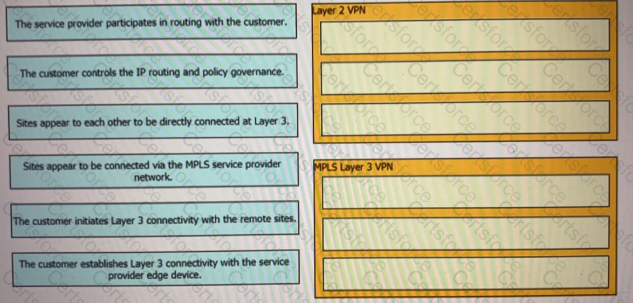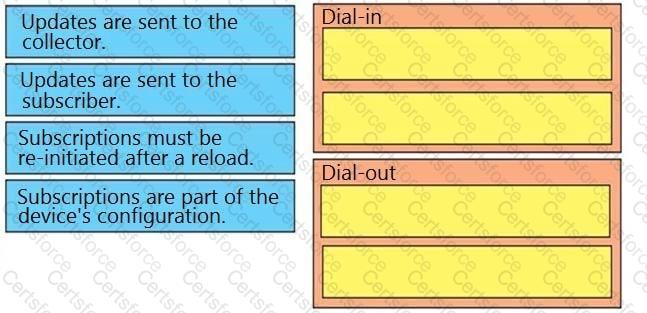Drag and drop the descriptions from the left onto the corresponding VPN types on the rights.

Drag and drop the model driven telemetry characteristics from the left onto the mode they belong to on the right.

Since installing a cisco TelePresence system, the company is experiencing other application having response issues when the system in use. As a result, the company asked an architect to recommend a QoS solution. The customer is currently using a CBWFQ policy to manage traffic on an internet connection with a speed of 100 Mbps. Which link-capacity limit must the architect choose for strict-priority for the real-time traffic?
What is the function of the multicast Reverse Path Forwarding check?
Which element in a Cisco SD-WAN architecture maintains a centralized routing table?
Which two functions are provided by the Cisco SD-WAN orchestration plane? (Choose two.)
A customer’s environment includes hosts that support IPv6-only. Several of these hosts must communicate with a public web server that has only IPv4 domain name resolution. Which solution should the customer use in this environment?
Which integration capability does gRPC provide?
What is a benefit of using VRRPv3 as compared to VRRPv2?
Which feature must be incorporated into the campus LAN design to enable Wake on LAN?